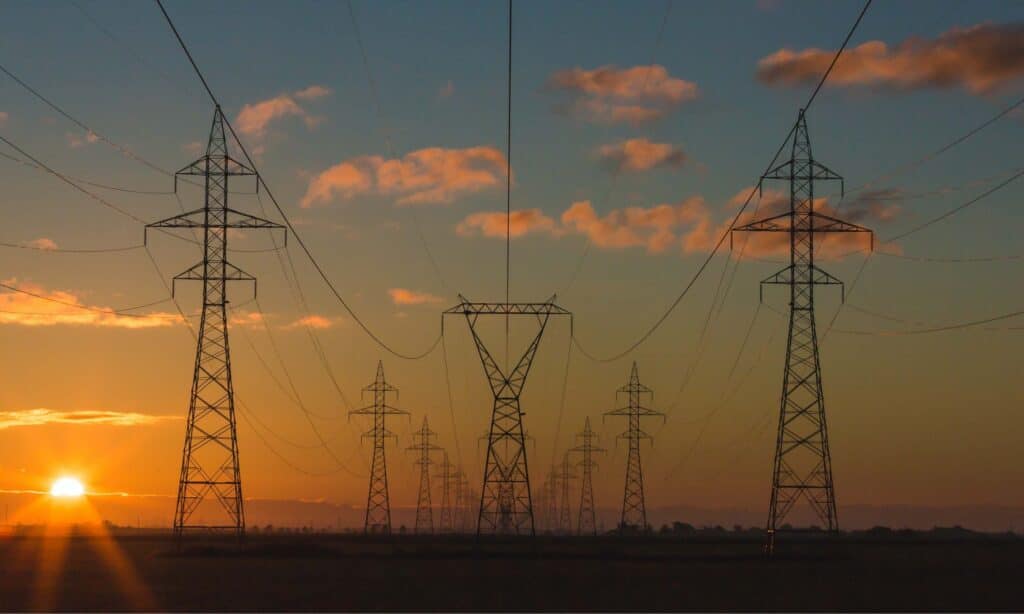
As climate impacts intensify, and clean electricity solutions are lying in wait, the federal government has a choice: to lock in benefits for communities or lock in profits for the fossil fuel executives. (Photo: Matthew Henry via Unsplash)
As people throughout Canada struggle with rising costs, a foundational regulation for the energy transition promises to make energy more reliable and affordable for households—but only if loopholes and extensions that favour continuing fossil fuel generation are addressed.
Transitioning to 100 per cent zero-emissions electricity by 2035 presents the greatest economic opportunity of our time. In addition to making energy more affordable for households, this new electricity system will create hundreds of thousands of new jobs, attract billions in investments and form the backbone of Canada’s work on climate solutions.
It’s also popular, with more than 71 per cent of Canadians in support.
We’re on the verge of securing a federal policy on clean electricity that could cut more than 340 million tonnes of Canada’s greenhouse gas emissions by 2050—the same amount as removing 74 million cars from the road for a year. Done right, this policy will generate $29-billion in net benefits to the Canadian economy and deliver significant health benefits for people in Canada.
We’re on the verge of securing a federal policy on clean electricity that could cut more than 340 million tonnes of Canada’s greenhouse gas emissions by 2050—the same amount as removing 74 million cars from the road for a year.
Multiple reports, including our own “Shifting Power,” show that as Canada moves to zero-emissions electricity, household energy bills will go down for everyone, with one study showing average household energy costs 12 per cent lower in 2050 thanks to the transition away from fossil fuels, and another showing that a household that switches to clean energy can save nearly $10,000 per year.
Renewable sources such as wind and solar are now the lowest-cost sources of electricity in history. Research, including that by the David Suzuki Foundation, shows that Canada can reach 100 per cent emissions-free electricity by 2035 with nearly all new power coming from abundant, low-cost wind and solar that is supported by energy storage, efficiency measures and grid upgrades like interprovincial transmission.
It’s the federal government’s role to set policy to regulate emissions from the electricity sector. In setting a goal of 100 per cent clean electricity by 2035, Canada is in good company, with similar commitments made by the United States, European Union, United Kingdom, and the G7.
To bring the most benefits, the regulations must ensure that no new fossil fuel projects are connected to the grid and that all fossil fuel projects are phased out by 2035. The fossil fuel industry is advocating for loopholes, extensions and exemptions to keep polluting electricity sources on the grid. Key government ministers and staff have met with fossil fuel lobbyists more than 400 times in the first six months of this year alone.
But the devil is in the regulatory details. To bring the most benefits, the regulations must ensure that no new fossil fuel projects are connected to the grid and that all fossil fuel projects are phased out by 2035. The fossil fuel industry is advocating for loopholes, extensions and exemptions to keep polluting electricity sources on the grid. Key government ministers and staff have met with fossil fuel lobbyists more than 400 times in the first six months of this year alone.
Allowing new fossil fuel generating plants—such as those proposed in Ontario and Prairie provinces—would be a risky, expensive mistake. Ultimately, Canadians will be left with the bill.
No extensions should be given for fossil fuel generators beyond 2035, regardless of when they are commissioned. As Canada contends with the consequences of a worsening emergency following this summer of climate reckoning, allowing the main culprit, fossil fuels, to continue on Canada’s grid until as late as 2045 will only make the problem worse. Right now, much of the electricity sector is exempt from carbon pricing. It should be under the full carbon price as soon as possible.
As written, the regulations have no new emissions obligations before 2035. Interim measures and compliance pathways are also needed leading up to 2035 to ensure that utilities and companies take the time to plan ahead.
To maintain affordability, the final clean electricity regulations need to be paired with federal funding and complementary affordability measures such as no-cost heat pump programs for low-income households, and federal support for grid upgrades and interprovincial transmission.
With just over 11 years left to meet this target, there is no room for backsliding. We need to ensure all jurisdictions are on track. Alberta, which is pushing back against the 2035 target with a well-funded but misleading advertising campaign, does so at the expense of its people, economy and reputation.
With just over 11 years left to meet this target, there is no room for backsliding. We need to ensure all jurisdictions are on track. Alberta, which is pushing back against the 2035 target with a well-funded but misleading advertising campaign, does so at the expense of its people, economy and reputation.
Ambitious regulations that are in line with climate science are no small undertaking, but the work ahead comes with unprecedented opportunity to deliver affordability, climate and health benefits. As climate impacts intensify, and clean electricity solutions are lying in wait, the federal government has a choice: to lock in benefits for communities or lock in profits for the fossil fuel executives.
This op-ed was originally published in The Hill Times.
Related Projects
Always grounded in sound evidence, the David Suzuki Foundation empowers people to take action in their communities on the environmental challenges we collectively face.


